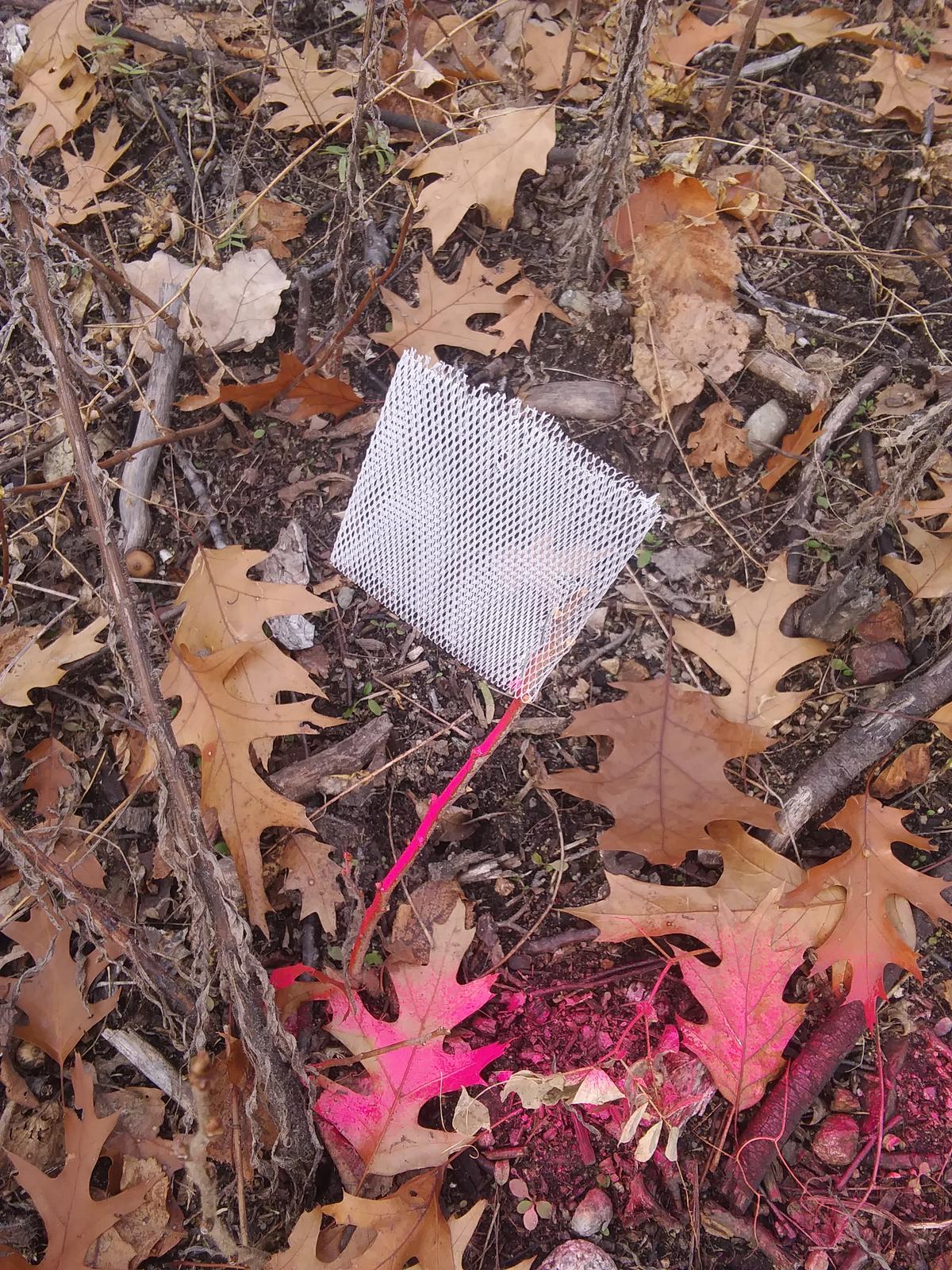Overview
High deer populations have had dramatic impacts on the ability of favored trees species to regenerate. Paper bud caps have proven effective on pine species, the needles serving to secure the paper around the terminal bud. Since oak seedlings loose their leaves, it has been very difficult to effectively secure paper around the terminal bud to provide adequate protection through the winter.
In an attempt to find a better solution for oak protection, we purchased a lightweight, semi-rigid, poly mesh slip on with a stay open top. The theory was the flexible mesh material could be pulled tight around the terminal bud and stapled, holding the mesh in place so it wouldn't slip down the stem. The mesh material would prevent moisture retention or build-up, removing the threat of mold and mildew, and less heat build-up within the cap. The mesh material measured 2 3/4" x 3" and is designed for one application prior to photo-degradation.
The technique was tried on planted 1-0 Red oak, 2-0 White pine, and any existing oak stump sprouts.
Pre-treatment stand description and condition
Stand establishment and management history:
Site was salvage harvested summer of 2017, due to severe windstorm in 2015. All dead and damaged species were removed, and if possible, residual trees were left every 30' in an attempt to mimic a shelterwood. Stand was chipped, removing the majority of the slash from the site, no other site prep. Site was planted in spring 2018 to 300 TPA Red oak and 200 TPA White pine.
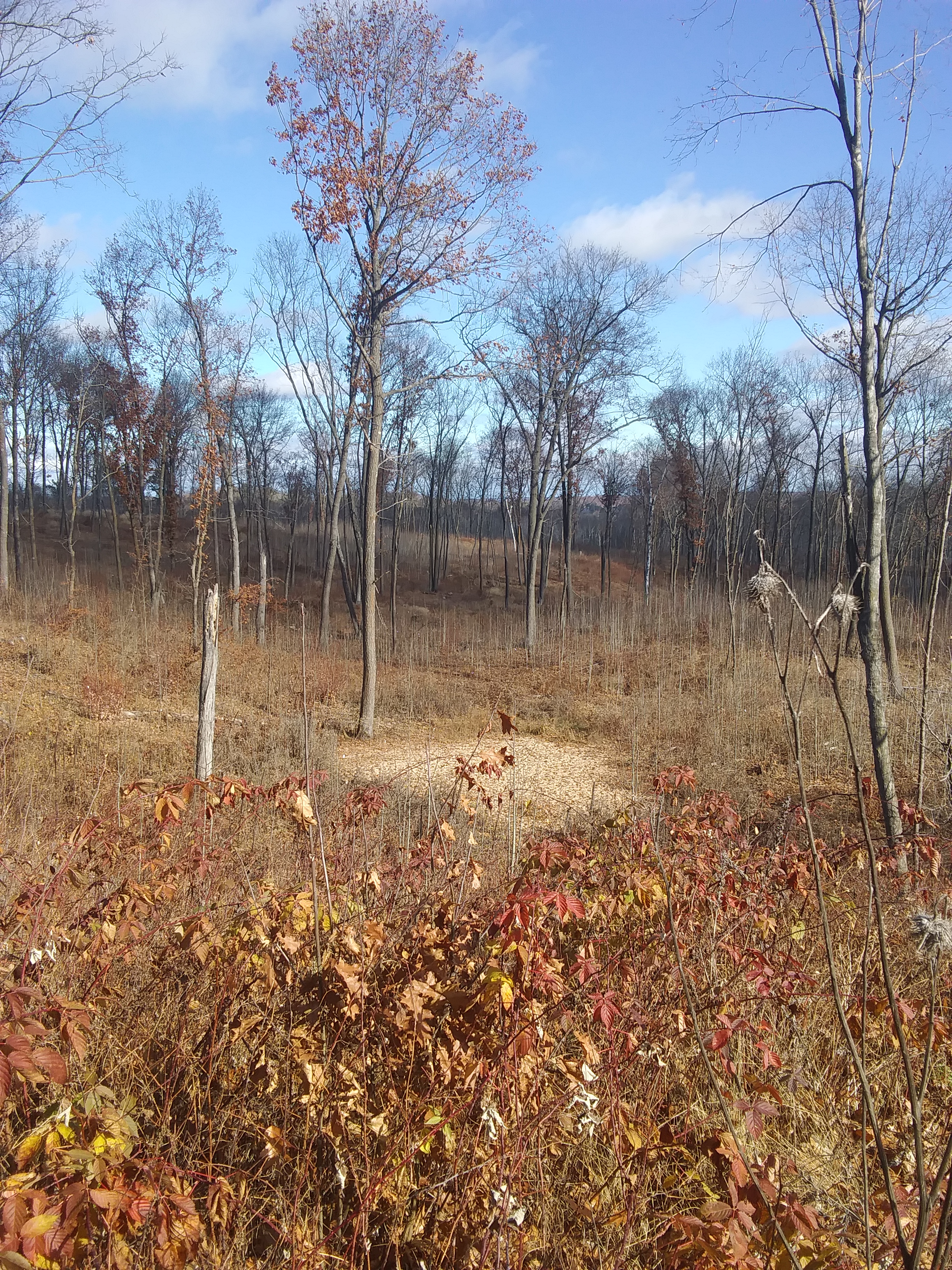
Figure 1: Conditions during application
The site adjacent had been harvested with the same prescription one summer prior and very few stump sprouts have been found.
Pre-treatment forest health issues:
None.
Silviculture Prescription
Install flexible mesh budcaps as follows:
- A minimum of 2 staples per net is needed.
- Stretch net sleeve around stem and staple as close to tree stem as possible to hold net in place, but not through the stem of tree.
- Place the top end of the net approximately 2-3 inches above the terminal bud of each seedling
- Staple placement should be located on the lower half of the net only, to allow for bud expansion in the spring, while closed enough in the top half to prevent deer from eating the terminal bud.
What actually happened during the treatment
Both Red oak and White pine seedlings were capped with the mesh sleeves October, 2018 through the use of a contract crew with the following specifcations.
Very good growing conditions through the summer, 100% survival of planted stock. Oak: it was much easier to stretch the mesh tightly on the sturdier stump sprouts than the flimsy newly planted stock, so quality was much better on the stump sprouts. It was extremely difficult to locate the newly planted oak seedlings as the crew were looking for 8-10" twigs, as many of the seedlings had already lost their leaves. Pine: Very easy to put on, and similar to paper bud caps, needles held the caps in places securely without the need to stretch the mesh.
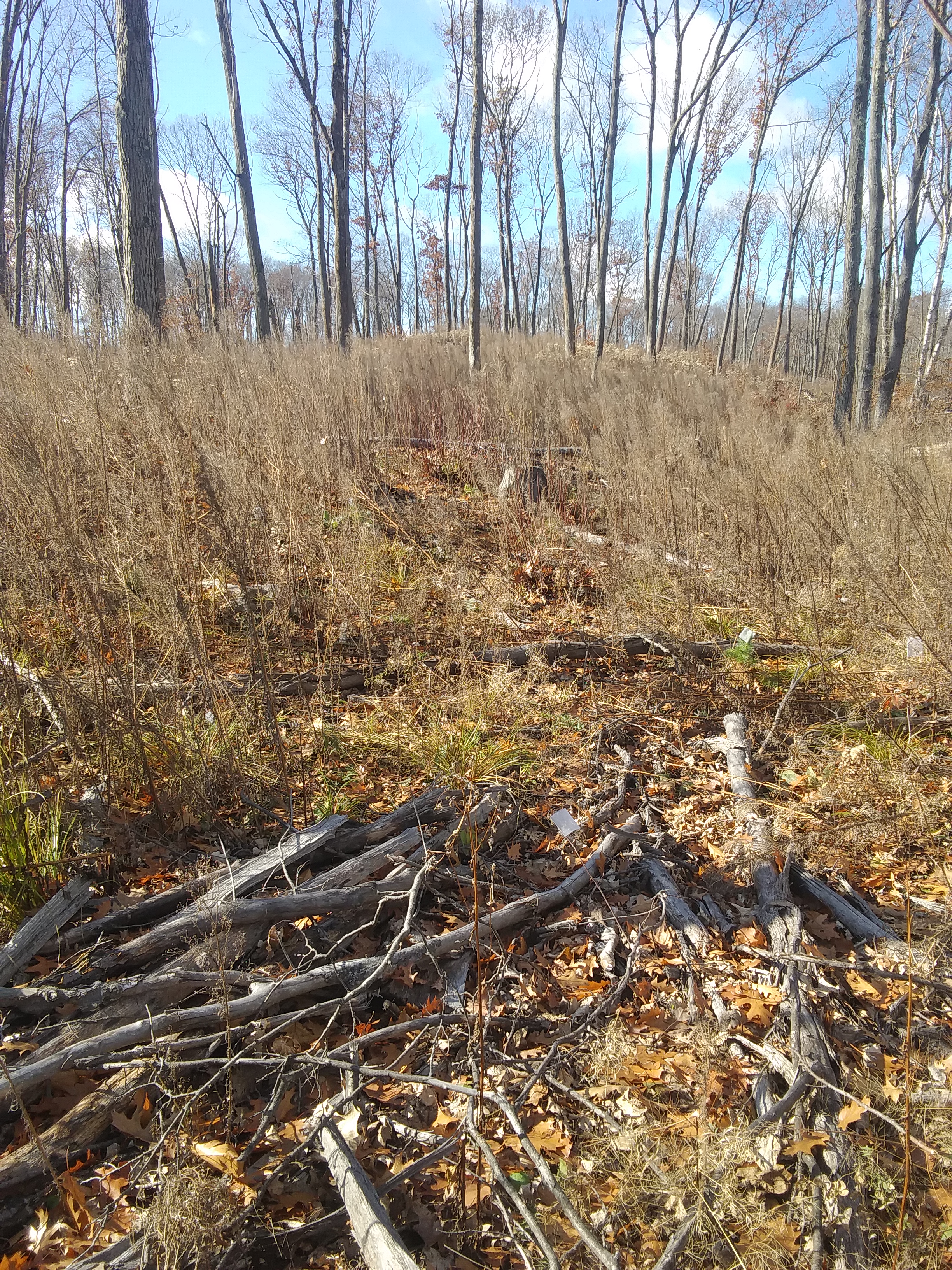
Figure 2: Conditions during application
Post-treatment assessment
Positives/ Negatives
The mesh was very good quality, and believe it will prevent moisture retention or build-up, removing the threat of mold and mildew, and less heat build-up within the cap as has been noted in balloon bud capping techniques.
Finding the oak seedlings: On future sites we are going to attempt painting the tips of our oak seedlings (blue or pink) prior to planting, it should assist in finding the small seedlings on future browse protection contracts. This technique should be feasible anytime after the possibility of another flush (or significant growth) is over.
It was a time consuming project between finding the trees and the application.
The application: It was hard to stretch the mesh on the newly planted 1-0 oak stock (<1/4 inch stem diameter at terminal bud), as the stems would bend more easily than the mesh would. As the stems add girth and become less flexible it would be more effective, as we saw on the stump sprouts. Roughly 1/4 of the mesh caps slipped down the stem of newly planted stock, due to inability to stretch the mesh tight around the stem, based on follow-up regeneration survey in May, 2019.
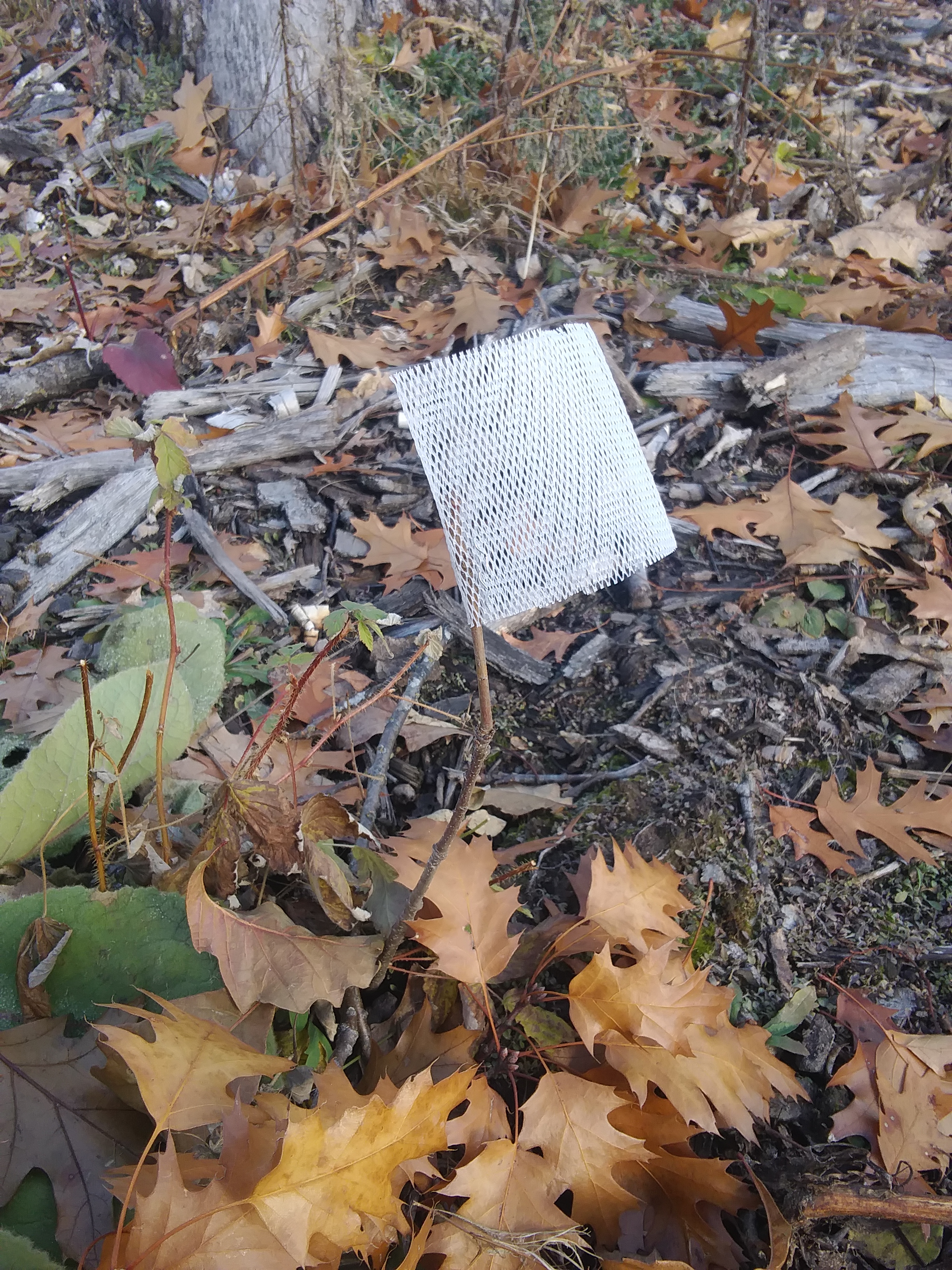
Figure 3: Capped oak seedling
The stump sprouts (>/= 1/4 inch stem diameter at terminal bud) were sturdy enough to take the stretching of the mesh around their stem. They were much easier to fasten tightly around the terminal bud and much easier to find due to their size (1-3') and typical clumps found on oak sprouts. Mesh caps worked well in browse protection based on follow-up regeneration survey in May, 2019. Particularily the stump sprouts, if they were not protected - they were 100% browsed.
Pine: Very easy to put on, and similar to paper bud caps, needles held the caps in places securely without the need to stretch the mesh.
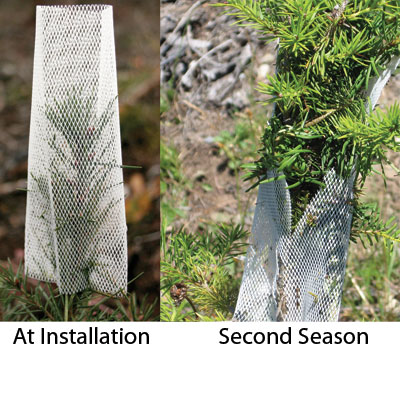
Figure 4: Mesh caps over two growing seasons.
Plans for future treatments
Browse protection fall 2019, using lessons learned from this experience, either using the mesh caps again or another source of protection. IFA budcap (sticky paper) is being planned for use in fall 2019.
Costs and economic considerations
| Activity | Cost | Totals | Funding | Comments |
| Mesh sleeve material | $2.75/100 | $1,650.00 | Minnesota Deer Hunters Association | This was the cost for 60,000 caps |
| Protection application (labor) | $200/ac | $22,000.00 | Minnesota Deer Hunters Association |
Summary / lessons learned / additional thoughts
This technique has the potential to be effective for oak browse protection on larger stock (>/= 1/4 inch in stem diameter at terminal bud), not so much on smaller stock that is too flexible. It holds fast around the terminal bud and does not slip down the stem. Snow cover this winter (+/-14") will likely protect the newly planted seedlings this year, seedlings may be large enough by fall of 2019 for proper application of the caps. However, future first year browse protection of oak should not use this technique, as the caps cannot effectively be secured around the terminal buds.
This case study was developed with support from the United States Department of Agriculture's National Institute for Food and Agriculture (USDA-NIFA), Renewable Resources Extension Act (RREA). Project #MIN-44-E02, principal investigator Eli Sagor, University of Minnesota.
Supplemental Content
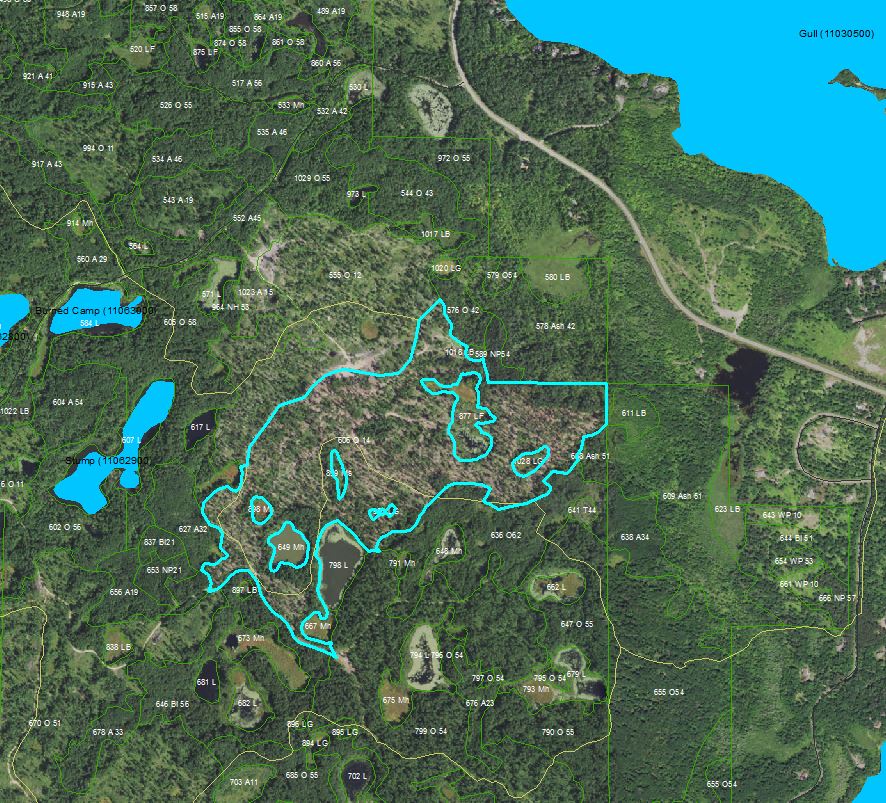
Site map.
